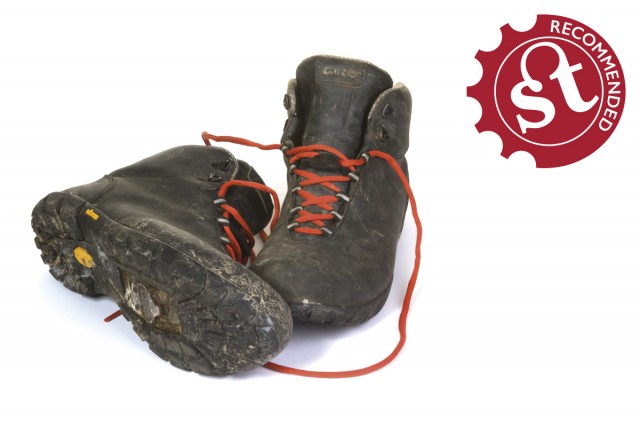Not much of the US has our kind of tepid-sleety weather in the winter, so it’s a brave move from California-based Giro to come out with a winter boot designed for British-style murk.
The boot is a very subtle thing that immediately calls to mind the traditional Brasher walking boot. These boots instead are made with a synthetic upper which has worn well and weathered like leather too. The sole has a semi-aggressive Vibram IceTrek rubber over a stiff, but not rigid shank. The boots lace up (with red and black laces both included in the box) and the tongue is a bellows-style to keep water out. The tongue and boot are lined with PrimaLoft insulation to keep you warm.
I’ve been trying these boots since the spring and have found plenty of places where they’ve been the ideal shoe for the job. They fit pretty true to size, so go up a size if you like thicker socks, and the laces allow a large amount of adjustment, then stay put when needed.
On long, Lakeland and Alpine push-slogs, I’ve found them to be excellent. There’s minimal heel lift and the sole is stiff enough to walk in all day, but grips well to wet rock. A more aggressive tread would work better on mud and wet grass, but it’s a good all-round compromise for winter. While riding, the boots offer great power transfer and still keep some toe-wiggle room. While they are insulated, I’ve rarely found them too hot, even in the Alps in summertime, and I’ve found them comfy enough to wear in the office once I’ve ridden to work in them.
Overall: An excellent boot if your winter riding has as much scrambling and pushing as it does riding – and versatile enough to wear in all but the hottest weather too.
BEST DEALS ON GIRO TERRADURO
Review Info
| Brand: | Giro |
| Product: | Alpineduro boots |
| From: | Zyro, zyro.co.uk |
| Price: | £149.00 |
| Tested: | by Chipps for Five months. |

